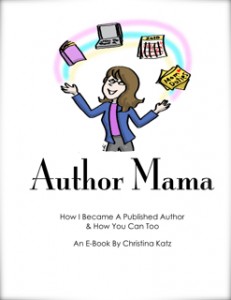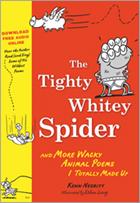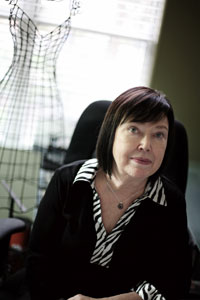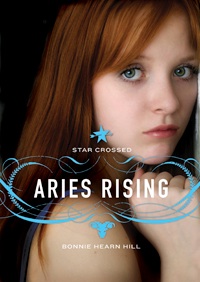 My good friend and writing mentor Christina Katz has recently released an e-book called Author Mama: How I Became a Published Author & How You Can Too. If you’ve ever considered writing a book, I highly recommend this as a way to help you decide if you want to take the plunge and learn about what will be expected of you. Author Mama can help answer some of the following questions for you about publishing a book:
My good friend and writing mentor Christina Katz has recently released an e-book called Author Mama: How I Became a Published Author & How You Can Too. If you’ve ever considered writing a book, I highly recommend this as a way to help you decide if you want to take the plunge and learn about what will be expected of you. Author Mama can help answer some of the following questions for you about publishing a book:
- What would the process be like?
- What are the steps?
- What do publishers do for authors?
- How long would it take from start to finish?
- Can you make any decent money?
- Should you self-publish or traditionally publish?
Christina had great tips that helped me while I was writing Book by Book: The Complete Guide to Creating Mother-Daughter Book Clubs, and I know she’s got great advice that all writers can benefit from.
Here’s what she has to say about Author Mama:
Why would you do an e-book after two traditionally published books?
Like most traditionally published authors, who blog, teach and speak, I have a backlog of quality content to draw on and some of it, though not all of it, will lend itself to the e-book format. So I plan to write several e-books over time and Author Mama is the first. I have old sketchbooks full of ideas I’ve had over the years, which will lend themselves well to e-formats. Equal opportunity access to e-publishing technology offers all of us writers a lot more creative leeway than we have traditionally had, which can lead to exciting and fun possibilities.
Besides being in e-book format, how is Author Mama different from Writer Mama and Get Known Before the Book Deal?
Author Mama is the story behind how I landed my book deal for Writer Mama and then wrote the book. I wanted to describe in play-by-play form what writing a non-fiction book is like for the benefit of moms considering the possibility with the lessons I learned along the way. One of my students who is on the verge of querying agents with a nonfiction book proposal says that Author Mama “goes there.” In other words, it deals squarely with the rollercoaster ride that most first-time authors experience. The format of my traditionally published books is not as driven by my personal experience, even though it informs them both. In Author Mama, I include all of the books that I recommend first-time authors read before, during, and after the book deal, so they can become as informed and empowered as possible.
Who are the intended readers for Author Mama?
Well, my two traditionally published books don’t target the same exact audience and neither does Author Mama. When I wrote Author Mama, I had my Writer Mama readers in mind, but of those readers, I was specifically focused on anyone seriously considering writing a book someday. Not every writer mama wants to write a book someday. Some are perfectly happy writing and publishing articles. So Author Mama is a slice (a writing book), of a slice (for moms), of a slice (who are considering becoming an author some day), and therefore too small of an audience for a traditional publisher. But many of my students and fans have this question and would like to answer it for themselves. Author Mama is for them.
Did you have any hesitations about self-publishing?
Considering how much content I have sitting around languishing on my hard drives, I am sorry that it’s taken me this long. The person I had the hardest time convincing was myself. I’ve had some hang-ups about e-books that I’ve had to get over in order to move forward. As long as my work continues to serve the best interests of my readers, why wouldn’t I self-publish? I certainly have a lot more to offer than I would just letting it sit around collecting virtual dust. At this point in time, I feel like it would be foolish not to e-publish, even as I continue to write traditional books.
Are publishers anxious about traditional authors self-publishing? Doesn’t this undermine their business?
I think, when it comes to self-publishing the opportunity always exists to take the enlightened view or the fearful view. I have heard people in publishing make comments that authors self-publishing is terrible news, which is absurd. The fearful attitude is, “Oh no, if that author can self-publish, then we lose.” The enlightened view is that when the people you partner with are more successful it’s good for you too because it raises all boats. Besides, when all the folks involved in a partnership are empowered and come together because they want to be there, that’s good for the relationship. It’s important to have good boundaries and communication in business and know the difference between what’s yours, what’s not yours, and what is joint ownership. When you keep these things in mind, and communicate clearly, there is really nothing to fear but fear itself.
How do you keep people from “stealing” your e-book?
I can’t stop people from stealing my e-book. I am completely powerless over that aspect of e-publishing, as most of us are. However, my target audience is not teenage boys and young men, who are supposedly the folks who do most of the pirating, according to the experts who study these trends. So I’m not going to lose any sleep over it. Also I don’t plan on giving my e-books away to avoid the impression that they are “freebies,” whereas with a traditional book I always do a lot of giveaways to get the content out into circulation. E-books are a lot easier to circulate. I can send one to you in seconds. So at this time, I don’t see the point in giving them away and encouraging others to share them without permission. I’d prefer to sell them to a smaller, more exclusive audience, who will see the value and, hopefully, respect my copyright.
What are three major points you hope aspiring writers learn from reading Author Mama?
- That landing a traditional book deal and delivering a well-written book is possible but not easy by any means.
- That someone else has survived the rollercoaster of emotions that come part and parcel with a first traditional book deal and you can too.
- That some writers actually give up along the way and don’t succeed at delivering their first book but this won’t happen to the writers who read Author Mama because forewarned is forearmed.
Is this book only for nonfiction writers or can fiction writers benefit from it too?
Author Mama is specifically about my nonfiction book writing process, which is different from the process for other genres like fiction or memoir. However, a lot of my readers, who write in other genres, have said over the years that they find a lot of takeaways in my nonfiction experience. Also, I fully expect Author Mama to convince a few readers to try writing a nonfiction book, who might have only considered themselves other types of writers or not even writers at all.
Can I order a print copy of Author Mama?
When the book comes out in the final version in May, I will make it available for purchase in print-on-demand format, as well as all the other e-formats. During April, while it’s in beta, Author Mama is available in PDF format, which means you can print it out and put it in a binder yourself, if you prefer a hard copy. I’ve invited the first readers to participate in the process, so I’ve included a feedback form with the e-book but participation is voluntary. However to sweeten the deal, I will provide those who share feedback on the beta version with the final version for free, after it’s updated in PDF form.
Can I order this e-book for someone as a gift?
Sure you can. When you place your order, simply submit their e-mail address in the notes section and I will e-mail the copy to them instead of to you.
About Christina Katz, The Author Mama
Christina Katz has been teaching writers to cultivate thriving careers for the past decade. Many of her students start by writing short articles and work hard and long until they eventually succeed in landing traditional book deals. Christina is the author of Get Known Before the Book Deal, Use Your Personal Strengths to Grow an Author Platform and Writer Mama, How to Raise A Writing Career Alongside Your Kids, both from Writer’s Digest Books.
In addition to writing books and articles, Christina publishes a weekly e-zine, The Prosperous Writer, hosts The Northwest Author Series, travels to writing conferences and literary events, and coaches a hundred writers a year. She holds an MFA in writing from Columbia College Chicago and a BA from Dartmouth College. She lives in an idyllic cottage in Wilsonville, Oregon with her husband, daughter and far too many pets.
Keep up with Christina, if you can, at www.christinakatz.com.








